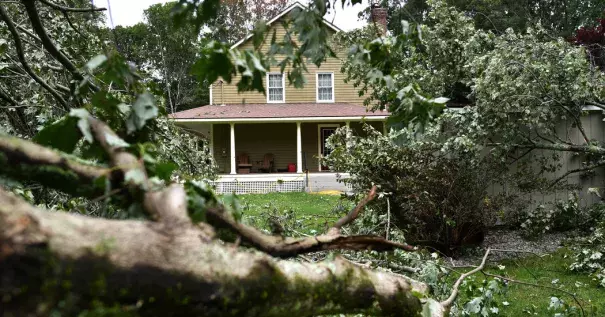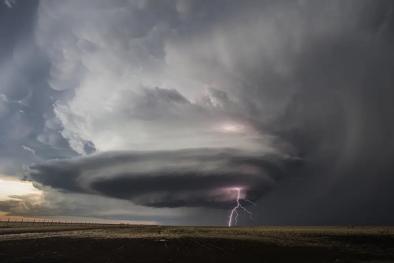Tornadoes on the East Coast May Be a Sign of Things to Come

Though individual weather events are distinct from the more broadly changing climate, global warming does influence weather patterns. Still, any link between climate change and the frequency of tornadoes is far from straightforward, according to researchers.
The reason, in part, has to do with the limited data available on tornadoes versus other types of weather phenomena. When it comes to extreme heat, for example, researchers can mine independent temperature records that stretch back more than a century. This historical record helps them assess, as they have this summer, that a heat wave is in keeping with human-driven changes to the climate, rather than just natural variation.
Tornado research, by contrast, does not benefit from a long data record. Until the 1990s tornado data was primarily based on someone spotting a tornado and reporting it to the National Weather Service. Since many tornadoes are small and last only a few minutes, some of them have presumably gone unnoticed.
The development of a comprehensive Doppler weather radar system helped overcome many observation gaps by the 1990s, but modern technology can’t make up for the limited records of the past. This makes it harder to find trends in tornado data than in temperature data, said Michael Tippett, a professor of applied mathematics at Columbia University.
However, Dr. Tippett and his colleagues have published research on tornado outbreaks — tornadoes that occur in a bunch — and they did find a trend. “Those bunches are getting bigger,” said Dr. Tippett.
...
Researchers know that there are two ingredients that fuel severe storms that could spawn tornadoes: potential energy in the air and wind currents, or wind shear. The rising levels of greenhouse gases in the air add more energy to the climate system, Dr. Diffenbaugh said. There’s less consensus on how climate change will affect wind shear, though a 2013 study on the thunderstorm conditions that form tornadoes found that the impact was negligible.
Overall, “We do have strong evidence that at the large scale that global warming is likely to increase the atmospheric environments that create the kind of severe thunderstorm that produces tornadoes,” Dr. Diffenbaugh said.
When scientists run climate models assuming global average temperatures of one degree Celsius (two degrees Fahrenheit) higher thanpreindustrial levels — where the Earth currently stands — some show an uptick in tornado frequency, but others do not. That disagreement, however, fades away at two degrees Celsius of warming, the threshold that the Paris climate agreement is intended to avoid. All the models agree that the frequency of tornadoes will increase by that point.
Related Content






